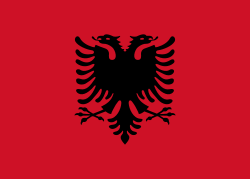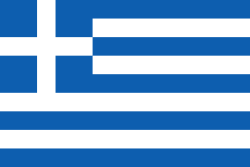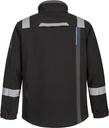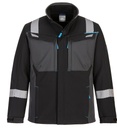FR704 Xhup Softshell FD WX3, Vetvetiu FD
Xhupi Softshell WX3 është ndërtuar nga një pëlhurë e butë me 3 shtresa të buta. Duke përdorur elementë modakrilikë dhe fibra karboni, ky xhup i butë siguron mbrojtje nga flaka, agjente kimik dhe anti-statike, si dhe është e papërshkueshme nga era, rezistente ndaj ujit dhe ajrosese. Karakteristikat inovative të dizajnit përfshijnë përbërës pa metal, ventilim në pjesën e pasme, menge të rregullueshme, logot FR të qëndisura dhe xhepa të shumtë për ruajtje të bollshme.,
Veçoritë
Vetite flakerezistuese nuk veniten gjate larjeve
Mbrojtje kundër nxehtesise rezatuese dhe konvektive
Xhepa të shumte
100% Pa metal
Shiriti reflektues segmented është ngjitur me të nxehte
Ngjyra me kontrast për shtim stilesh
Menge të rregullueshme Hook & loop
Fund i zgjatur mbrapa për nje mbulim me të mire
Ajrosje nga mbrapa për qarkullim ajri dhe komfort
Stil i Ri
CE-CAT III
pëlhurë e klasifikuar me UPF 40+ për të bllokuar 98% rrezeve UV
Certifikim CE
Ajrosese, ere ndaluese, dhe ujerezistuese
Rezistente ndaj Eres
8 xhepa për hapsire mbajtese me të madhe
Materialet:
Pëlhura Jashtme/Kryesore: Modaflame Softshell: 100% Poliestër 95g e laminuar me një membranë TPU të qëndrueshme ndaj flakës 35g dhe e bashkuar me Pëlhurën fleece 60% Modakrilik, 39% Pambuk dhe 1% Fibër Karboni, Flakë-duruese 220g, pesha totale 350g
STANDARTET
EN ISO 11612 (A1 B1 C2)
EN ISO 11611 Klasi 2 (A1)
EN 1149-5
IEC 61482-2 IEC 61482-1-2 APC 2
IEC 61482-2 IEC 61482-1-1 (ELIM 11 CAL/CM²)
EN 13034 Tipi PB [6]

PORTWEST WX3
RELIABLE PROTECTION WHATEVER THE INDUSTRY Work environments can be tough on clothing, WX3™ workwear is designed to withstand tough conditions, combining reinforced stitching, abrasion-resistant panels, and our most durable fabrics. This combination of durable and robust fabrics, improved fit and better stretchability allows the wearer to move more freely, enhancing comfort and flexibility. Available in the core colours demanded by industry, WX3™ allows you to offer a uniform look to your workforce, regardless of their function and colour preference. With inner and outer pieces that can be layered up or down, WX3 offers exceptional versatility regardless of climate or industry.
EN ISO 11612 Heat & Flame
Letter A (EN 15025) This test consists of applying a flame to a fabric sample for 10 seconds. To pass the test, the after flame & smoulder times and formation of holes must be within the tolerances within the standard. The application of a flame can take place in two ways: Code Letter A1 Surface Ignition, ISO15025 A Procedure A (leads to Class A1), the flame is applied horizontally to the face of the fabric No specimen shall permit any part of the lowest boundary of any flame to reach the upper or either vertical edges No specimen shall give hole formation of 5mm or greater in any direction, except for an inter-lining that is used for specific protection other than heat and flame protection. No specimen shall give flaming or molten debris The mean value of after flame time shall be ≤ 2s The mean value of afterglow time shall be ≤ 2s Code Letter A1 Edge Ignition, ISO15025 B Procedure B (leads to Class A2), the flame is applied to the bottom edge of the fabric sample. No specimen shall permit any part of the lowest boundary of any flame to reach the upper or either vertical edges No specimen shall give flaming or molten debris The mean value of after flame time shall be ≤ 2s The mean value of afterglow time shall be ≤ 2s Letter B (ISO 9151) Convective Heat: determination of the heat transmission when exposed to flames. The sample is held above the flame and the rise in temperature on the topside of the sample is measured with a calorimeter. The length of time the sample can remain exposed before its temperature rises by 24 °C is determined. B1: 4 < 10 seconds, B2: 10 < 20 seconds, B3: 21 seconds and longer Letter C (ISO 6942) Exposure to Radiant Heat. In this test, a fabric sample is exposed to radiant heat (infrared rays). The temperature on the reverse (unexposed) side of the sample is registered using a calorimeter. Subsequently, the length of time the sample the sample can remain exposed before its temperature rises by 24°C is measured. The test procedure is the same as ISO 11611, but the classification is different: C1: 7 < 20 seconds, C2: 20 < 50 seconds, C3: 50 < 95 seconds, C4: 95 seconds and longer Letter D and E (ISO 9185) D = Aluminium E = Molten Iron Determining the level of protection against spatters of molten metal. A membrane (with similar properties to human skin) is attached to the reverse of the fabric sample sequentially rising quantities of molten metal (Aluminium or Iron as applicable) are splashed on the sample. The quantity of molten metal which deforms the membrane is determined. The classification for molten aluminium is: D1: 100 < 200 grams, D2: 200 <350 grams, D3: 350 grams and more The classification for molten iron is: E1: 60 < 120 grams, E2: 120 < 200 grams, E3: 200 grams and more Letter F (ISO 12127) This is a new test to establish a value for contact heat. The classification in this respect: F1: 5 < 10 seconds, F2: 10 < 15 seconds, F3: 15 seconds and longerDetails
EN ISO 11611 Welding & Allied
Standard specifies two classes with specific performance requirements. Class 1: is protection against less hazardous welding techniques and situations causing lower levels of spatter and radiant heat. Class 2: is protection against more hazardous welding techniques and situations causing higher levels of spatter and radiant heat.Details
EN 13034 Liquid Chemicals
Standard for protection of a potential exposure to a light spray, liquid aerosols or low pressure, low volume splashes when complete liquid permeation barrier (at a molecular level) is not required. The following chemical groups/chemicals can be tested: H2SO4 30% (Sulphuric acid), NaOH 10% (Sodium hydroxide also called lye and caustic soda), O-xylene, Butanol. The result is given in scale 1-3 where the maximum value is 3. To pass the test and be able to use the EN 13034 symbol in the CE-marking, at least one chemical shall obtain level 3 for liquid repellency and at least one chemical shall obtain level 2 for resistance to penetration.Details
Inherent FR Garments
Inherent fabric guarantees lifelong protection for the wearer. The FR properties lie in the molecular structure of the fibres and cannot be washed or worn out. PROS: excellent heat and ARC protection, excellent colour fastness even after numerous washings hence good cost in use performance, typically lighter weight solutions with excellent comfort levels, typically used in less dirty environments where the corporate look is also important. CONS: limited protection against molten metal splash, typically a more expensive fabric than FR treated. The most common FR fibers used in protective clothing are modacrylics and aramidsDetails
Share this product:
| Garment Size | S - Small or M - Medium or L - Large or XL - XLarge or XXL - XXLarge or XXXL - 3XLARGE |
| Color | BKR Black |
Once the user has seen at least one product this snippet will be visible.







